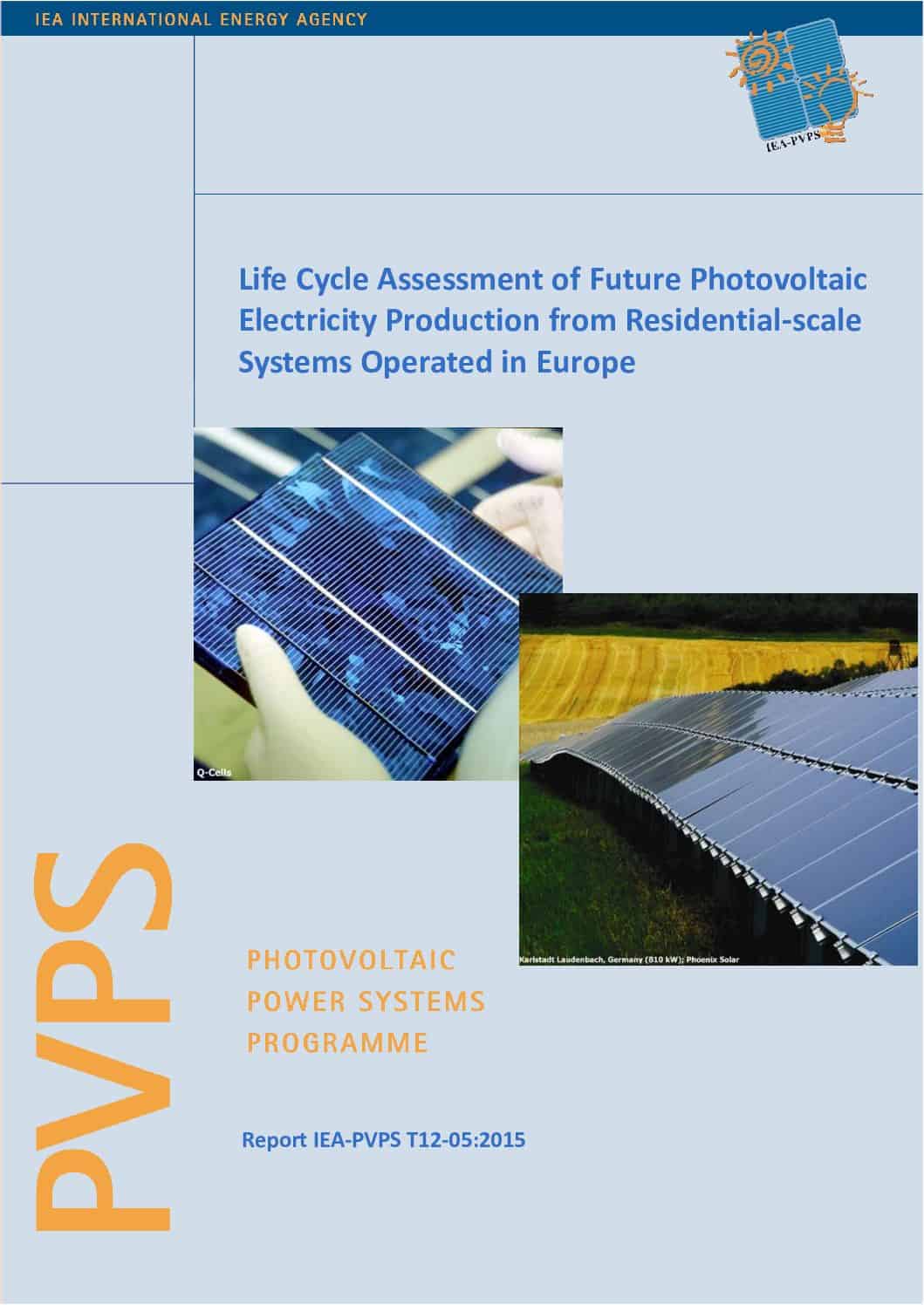The photovoltaics (PV) industry is growing rapidly to meet the increasing demand of green power. As the industry grows, the manufacturing processes and the material and energy efficiencies of PV cells and panels are improving. To assess the impacts of this trend, future scenarios of single-crystalline (single-Si, also known as mono-crystalline) silicon and cadmium-telluride (CdTe) PV systems installed on European residences were established. Assessment of the improvement potential of PV electricity-generating technologies such as single-Si and CdTe could be considered in long-term energy strategy decisions.
This study aims to provide scenario-based information about the environmental per-formance of single-Si and CdTe PV modules produced and operated in the far future (2030 to 2050). The deployment application assessed considers European residential roofs. We made scenario-dependent projections of key parameters for single-Si and CdTe PV panels manufactured in 2050. The parameters included cell efficiency, module efficiency, wafer thickness, cutting losses, kerf losses, silver use, glass thickness and operational lifetime.
This study combines developments for these parameters with projections of the environmental performance of electricity mixes in the main manufacturing countries/regions (European Union, China and the United States of America) and with projections of the environ-mental performance of basic material production (aluminium, copper, magnesium, nickel, pig iron, zinc, clinker and flat glass) in the far future. The three scenarios used in the assessment of future PV electricity were categorized into three classes: “business as usual” (BAU), “realistic improvement” (REAL) and “optimistic improvement” (OPT).
It estimates the current life cycle greenhouse gas emissions of single-Si PV electricity produced on the roofs of European residences to be approximately 80 grams CO2-equi-valent per kWh (g CO2-eq per kWh). Based on the projected changes to key parameters and the background system, life cycle greenhouse gas (GHG) emissions could be reduced to 65 % (scenario BAU), 31 % (scenario REAL) and 18 % (scenario OPT) of that value in the far future.
Results for other life cycle assessment (LCA) metrics are also assessed in this study such as: non-renewable cumulative energy demand, acidification potential, human toxicity potential, photochemical ozone creation potential, particulate matter formation potential, and land use.
We calculated the total energy payback time (EPBT) and the non-renewable energy payback time (NREPBT) in the far future of single-crystalline silicon-based PV panels operated in Europe by dividing the estimate of non-renewable cumulative energy demand of PV electricity for the given scenario by the non-renewable cumulative energy demand of the scenario-dependent national and regional non-renewable residual electricity mixes.
The study estimates the payback time could be reduced from 2.4 years today to 1.7, 1.2 and 1.2 years (scenarios BAU, REAL and OPT, respectively) in the far future, based on the assumptions and projections in the analysis.
It finally estimates the current life cycle greenhouse gas emissions of CdTe PV electricity produced on the roofs of European residences to be approximately 30 g CO2-eq per kWh. Based on the projected changes to key parameters and the background system, life cycle GHG emissions could be reduced to 70 % (scenario BAU), 44 % (scenario REAL) and 32 % (scenario OPT) of that value in the far future.
